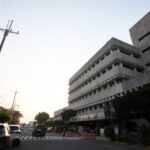MANILA – Several traditional jeepney drivers and operators have praised the Land Transportation Office (LTO) under the Marcos administration following the rollout of several digitalized services, most recently the online driver’s license renewal system (ODLRS) through the eGovPH mobile app.
In an interview at a jeepney terminal in General Trias, Cavite, driver Romeo Magura said the new ODLRS feature would reduce inconvenience and cost, eliminating the need for intermediaries.
“Even though I haven’t tried it yet, I think it’s good because I won’t have to go to the LTO anymore. The license will just be delivered to you. There’s no need for fixers since it’s all online,” he said.
Rosalie, a helper at the same terminal, said many drivers struggle with reading, making it difficult for them to renew their licenses without assistance.
“With the phone, their children can help them. It reduces hassle and saves time that could be spent driving. You can even do it at night or early in the morning,” she said.
In a phone interview, the president of the Liga ng Transportasyon at Operators sa Pilipinas (LTOP) expressed gratitude for the new digitalized feature.
“This is excellent—it solves the problem of long queues, whether for student permits, licenses, registration, or transferring vehicle ownership,” he said.
Through the ODLRS, all LTO-licensed drivers can now renew their licenses entirely online via the eGovPH app, including booking telemedicine appointments and completing the mandatory five-hour education program.
Once processed, applicants can pay fees online and choose between doorstep delivery or pickup at the nearest LTO District Office.
Drivers who renew through the app will also receive a digital copy of their license.
“All the headaches have been resolved through digitalization. This is highly appreciated,” he added.
Beyond convenience, he noted that online transactions are the best way to eliminate fixers.
“You don’t need a fixer anymore. Even if you’re in Mindanao—or abroad—you can renew your registration or license,” he said.
He encouraged other public utility vehicle (PUV) operators and drivers to support the government’s digitalization efforts, particularly the LTO’s new features.
“In the new Philippines, only the Filipino people can lift the nation forward,” he said.
Bulwagang Romeo F. Edu
The Bulwagang Romeo F. Edu is a cultural and event hall located in the Philippines, often used for official gatherings, exhibitions, and community activities. Named in honor of Romeo F. Edu, a notable local figure or contributor to the area’s development, the hall serves as a venue for promoting arts, heritage, and public events. While specific historical details may vary, it reflects the community’s commitment to preserving culture and fostering social engagement.
LTO-Central Office
The **LTO-Central Office** (Land Transportation Office Central Office) is the main administrative hub of the Philippine government agency responsible for vehicle registration, driver licensing, and road safety enforcement. Established under the Department of Transportation (DOTr), it oversees nationwide transportation policies and regulations, ensuring compliance with land transport laws. Its history dates back to the early 20th century, evolving from the Bureau of Public Works’ Motor Vehicle Section to a key agency in modernizing Philippine transportation systems.
East Avenue
East Avenue is a prominent historic street in Rochester, New York, known for its grand mansions and architectural significance. Developed in the late 19th and early 20th centuries, it was once home to wealthy industrialists and is often referred to as Rochester’s “Millionaires’ Row.” Today, it remains a picturesque boulevard lined with preserved historic homes, churches, and cultural landmarks.
Quezon City
Quezon City is a planned city in the Philippines, established in 1939 as the country’s capital under President Manuel L. Quezon, after whom it was named. Though it was replaced by Manila as the official capital in 1976, it remains the most populous city in the country and a major political, economic, and cultural hub. Key landmarks include Quezon Memorial Circle, the University of the Philippines Diliman, and the Batasang Pambansa Complex, reflecting its historical and modern significance.
General Trias
General Trias, located in Cavite, Philippines, is a city rich in historical significance, originally known as *San Francisco de Malabon*. It played a key role in the Philippine Revolution against Spanish rule and was where the *Acta de la Proclamación de la Independencia del Pueblo Filipino* (Act of the Proclamation of Independence) was signed in 1898. Today, it honors its revolutionary past while growing as an industrial and residential hub near Metro Manila.
Cavite
Cavite is a historic province in the Philippines, located on the southern coast of Manila Bay. It played a significant role in the country’s struggle for independence, being the site of the 1872 Cavite Mutiny and the birthplace of the 1896 Philippine Revolution against Spanish rule. Today, it is known for its rich cultural heritage, historical landmarks like the Aguinaldo Shrine, and its growing urban and industrial development.
Liga ng Transportasyon at Operators sa Pilipinas
The *Liga ng Transportasyon at Operators sa Pilipinas* (LTOP) is a national federation of transport operators and drivers in the Philippines, established to advocate for the rights and welfare of public transportation workers. It plays a key role in addressing industry concerns, such as fare regulations, modernization programs, and labor conditions. While its exact founding date is unclear, LTOP has been active in negotiations with government agencies to shape transportation policies in the country.
Mindanao
Mindanao is the second-largest island in the Philippines, known for its rich cultural diversity and vibrant history. It is home to numerous indigenous groups, such as the Lumad and the Moro people, and has been a center of trade, Islamization (dating back to the 14th century), and Spanish colonial resistance. Today, Mindanao is celebrated for its natural beauty, including Mount Apo, and its unique blend of traditions, though it has also faced challenges related to conflict and development.






